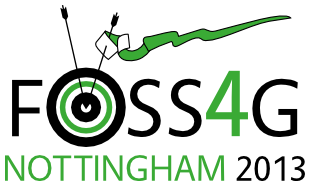Presentation
Management Of 3D City Models In PostGIS With The 3D City Database
Claus Nagel (virtualcitySYSTEMS) with Felix Kunde (virtualcitySYSTEMS)
The 3D City Database is an open source project under LGPL v3 and a free and powerful geodatabase solution to store and manage virtual 3D city models. Its relational database schema is derived from the data model of the international OGC standard CityGML and is set on top of a spatial database management system. CityGML has become a key interface for describing the semantics, appearance, geometry and topology of city and landscape models. It is predestined to represent and exchange data in fields of city planning, environmental analysis, simulation, facility management, marketing or political issues and civic participation. The impact of CityGML can be seen in other recent data models referring to 3D urban information modeling as they were designed in close adherence to the OGC standard, e.g. (INSPIRE Building 3D (Europe), IMGeo (Netherlands), AdV-CityGML (Germany). Along with the schema comes a high performance and efficient Java-based application for converting CityGML datasets independent from file size and complexity in both directions. The software also supports exports into the OGC standard KML and offers numerous options to customize the visual output and the presentation of information (balloons). A plugin API facilitates the development of additional functionalities e.g. other export formats, continuation workflows etc. Even though the database represents the CityGML data model it is not necessarily restricted to this kind of data. The database content can also be transformed into different 3D graphics and geodata formats like 3ds, Shape 3D or dxf (e.g. with FME). Thus, the 3D City Database renders a core component for integrating and distributing data for various use cases in the context of urban information modeling. Due to these strengths it has been embedded into several workflows of academic and commercial projects in the past years ranging from desktop applications to web access via OGC web services (WMS, WFS, W3DS). The development of the 3D City Database was led by the Department for Geodesy and Geoinformation Science (IGG) at the Technische Universität Berlin under the supervision of Prof. Dr. Thomas H. Kolbe, one of the fathers of CityGML. Since last summer the 3D City Database is also available for PostgreSQL/PostGIS, after having supported Oracle Spatial exclusively in former years (the software also won the Oracle Spatial Excellence Award for Education and Research in 2012). Regarding the still quite limited choice of tools to exchange and analyze 3D spatial data in PostGIS, the 3D City Database provides an efficient solution for the management of virtual 3D models. In 2013, the open source project has been brought to a new level. As the 3D City Database is used by companies to build up 3D spatial infrastructures in national cadastres and several european cities the idea arose to connect the developers working on this project in order to share tasks and accelerate the progress of the software. This February Prof. Kolbe (now with the Technische Universität München) and the companies M.O.S.S. and virtualcitySYSTEMS signed a cooperation agreement to steer the future development of the 3D City Database. Other companies and individuals who are interested in the 3D City Database or already using it are invited to send their ideas, feature requests, bug reports etc. to 3dcitydb@lrz.tum.de. The code repository can be accessed at www.3dcitydb.net.
